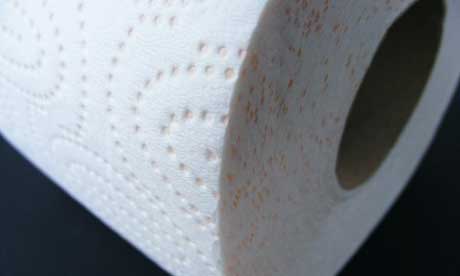
Most travellers come to expect a bit of an upset stomach, but what can you do if the runs just won't stop running?
A woman came to see me complaining of an ‘irritable bowel’, fed up with the bouts of abdominal pain it caused. The usual IBS treatment hadn’t worked and, on questioning her, it turned out that her gyppy tummy had only started after a visit to India nine months before. Stool tests confirmed that elegant, heart-shaped giardia parasites were swimming the breaststroke in her guts. A three-day course of metronidazole antibiotic cleared the infection and my patient got rid of her ‘irritable bowel syndrome’. She was relieved.
On any trip to the developing tropics, at least half of visitors will be struck with diarrhoea. In some regions and some seasons, two-thirds of venturers are hit. Usually symptoms are tedious but not severe, and the out-pouring settles after 36 to 48 hours. With my patient, her symptoms had seemed to disappear, but then recurred and recurred. What happens when diarrhoeal symptoms don’t just fade away? Is it safe to wait? Should you get treatment locally?
The good news is that most causes of prolonged diarrhoea are troublesome rather than dangerous, as long as you can keep drinking plenty of clear fluids. It can lead to weight loss and deficiencies so get a diagnosis made within a month. There are a range of causes – although persistent diarrhoea can be sparked off by travel, it can also be a sign of a new, non-travel-related problem. Don’t accept that persistent post-trip diarrhoea is ‘normal’.
Normal intestines are lined with microscopic finger-like villi, which increase surface area for ease of absorption of foods and fluids. Severe or long-lasting bouts of diarrhoea or dysentery can temporarily destroy the villi and increase the rate at which gut contents whizz through the bowel, thus aggravating the diarrhoea. There can also be a temporary allergy to milk sugars, which further exacerbates the diarrhoea.
A return-ee from the Canaries reported diarrhoea for a fortnight; he’d treated his weakness by taking a diet of Complan, cheese and whole milk. He was cured by avoiding dairy products and eating lots of starch: pasta, rice, toast and jam. Avoiding milk for six weeks allows recovery of the villi and the ‘allergy’ to milk sugar disappears completely. Eating yoghurt is all right, though, since the friendly lactobacilli in yoghurt digest milk sugar.
Several microbes can cause persistent diarrhoea, too. Giardia is the best known, and can be picked up anywhere from Malaysia to Lake Michigan. Often it starts with mild diarrhoea, bloating, abdominal cramps and sometimes sulphurous gas erupting from both ends of the intestinal canal. Giardia is eminently curable but resistance is beginning to be recorded, so if you do get this infection and symptoms haven’t settled a month after treatment, pester your doctor again.
My friend Hilary Bradt told me about another organism that blighted a recent trip she led in Madagascar. “Almost the whole group came down with a really nasty form of the trots. They’d get better for a few days, then it would be bad again, then better, then bad... it spoiled the trip.” Group members Paula and Mike reported to their GP on getting home and blastocystis was found in their samples. This bug belongs to a primitive group of organisms that are intermediate between plants and animals. There is still a debate about whether blastocystis actually cause disease themselves. They are, like Entamoeba coli, certainly an indicator of faecal contaminants, so perhaps Hilary’s clients were suffering not from the blastocystis but from other mischief-makers.
Certainly in some less-than-hygienic destinations visitors do pick up two or three pathogens at once. The danger of treating the microbes that are identified by the lab is that you overlook the bug that is actually making you ill. And remember that not all bugs will be identified by the laboratory. Three separate stool samples will only identify giardia in 80% of people suffering from that parasite, for example.
When looking at stool samples under the microscope, the big spores of parasites and intestinal worm eggs are easiest to spot. Very mobile micro-organisms such as cholera are also easy to see, and perhaps this is why cholera has the reputation as the cause of severe diarrhoea. A paper was published about imported cases of cholera that had been diagnosed in Birmingham. All of the patients had acquired one or two other pathogens in addition to their cholera. Two even had both bacilliary dysentery and amoebic dysentery as well as cholera. What often happens then is that once one bug has been found, it is blamed for all symptoms. We saw this among ill people in Kathmandu. A stool sample would identify Entamoeba histolytica cysts but the symptoms would suggest shigella; and the patient would get better on being treated with antibiotics to target shigella.
When, after a stint in Indonesia, I passed an earthworm-sized ascaris roundworm, I sent stool samples to the lab. The worm proved to have been a lonely one-and-only, although harmless Entamoeba coli were inhabiting my colon. I took no treatment.
The jury is still out on whether blastocystis does cause symptoms itself, but since treating it does – coincidentally – eradicate giardia and amoebae, the victim may feel better, or time itself will be the cure.
Diarrhoea is a common ailment of travellers to less-developed regions but intestinal turmoil that goes on for more than ten days should be investigated. Seek medical help and get a cure, and if you are ill when you get home, pester your GP.